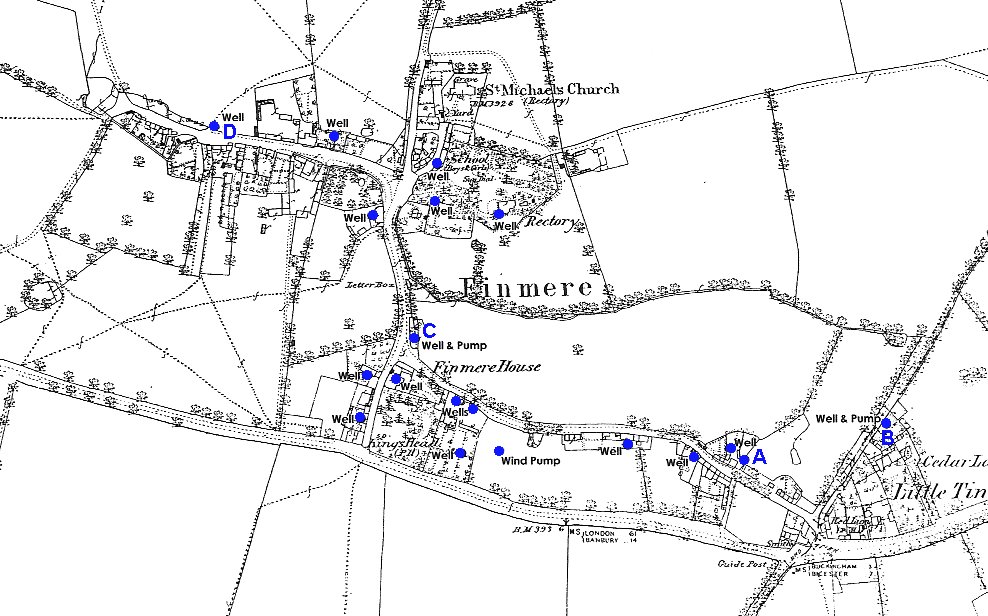
Finmere's Wells and Pumps

The sites of 17 wells, two water pumps and a wind pump are shown on the map above.
As the village grew, the need for water increased. In 1887, Rector Seymour Ashwell employed a West Country dowser to prospect for locations for wells:
Oct 19th. John Mullins came from Colerne in Wiltshire and marked by means of a ‘divining rod’ different places on the Glebe where Wells of Water could be dug. The rod in question being a small hazel twig of this shape /\. The different places are marked on the Ordnance Survey Map by a blue spot. A well at the East end of this Parish was dug at one of the places indicated and arched over with a date stone on top. At the expense of the Rector.
Unfortunately, this map does not survive. The well at the east end of the parish was on Mere Road (marked [A] on the map ). The picture (right) was taken shortly before it was destroyed by builders in the early 1990s.
Pumps
Two pumps survive in the village, both installed in Seymour Ashwell’s time. One is on Mere Lane in Little Tingewick [B]. The second is in Valley Road and has been carefully restored by Tim Killeen [C]. Both pumps were manufactured by E&H Roberts at the Britannia Ironworks in Deanshanger. Edwin and Henry Roberts ran a family business founded by Edwin’s grandfather, Richard, in 1821. Despite being gutted by fire in 1912, the business survived but went bankrupt in 1927. The pump on Valley Road is the older of the two. The pump on Mere Lane was manufactured after the Roberts had established a limited company in 1890. The Roberts also made drain covers; an example can still be seen inside the Church gate.
|
|
|
|
Mains Water
Piped water was installed in the village in 1947. Pumps B and C may have been connected to the main supply at that point. Pump B has poured water for at least 50 years.